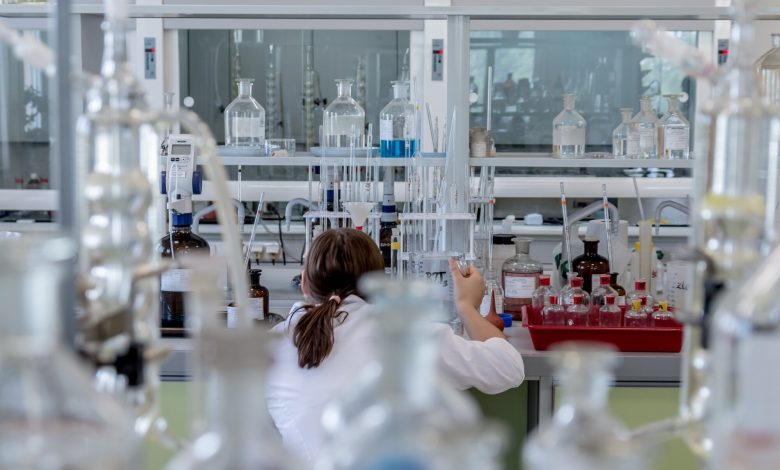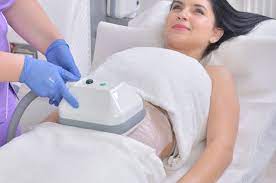9 Useful Pieces of Equipment You May Find in an Analytical Chemistry Laboratory

Are you familiar with analytical chemistry laboratories?
Analytical chemistry laboratories are where scientists perform a huge number of experiments. And there are many analyses of different elements and compounds around the world every single day.
So a chemistry laboratory needs to have all the appropriate analytical chemistry equipment. Each tool carries out different purposes for measurements and experiments going on inside the lab.
But what sort of equipment does a chemistry lab use? We’re glad you asked!
-
Table of Contents
Analytical Chromatography
Analytical chromatography is an important tool for chemical analysis. Chromatography separates and identifies the components of a sample. So chemists can use it to study mixtures, including pollutants and complex molecules.
Useful chromatographic equipment found in most analytical laboratories varies. These include high-performance liquid chromatography (HPLC) and gas chromatography (GC). Or laboratories could also have thin-layer chromatography (TLC) and capillary electrophoresis (CE).
HPLC columns are the most popular and versatile analytical chromatographic technique. They separate compounds by using a liquid mobile phase such as a buffer. They also use columns packed with a stationary phase such as silica.
GC is a technique used to identify, quantify, and compare the volatile components of a sample. It requires an injector, a carrier gas, and a detector.
LC is a process like HPLC, but it uses a solid stationary phase. This phase can be silica gel or alumina supported on glass, plastic, or metal plates.
CE separates, detects, and quantifies very small molecules, macromolecules, and complex mixtures. The instrument works with a high-powered electric field
-
Plasma Mass Spectrometers
A plasma mass spectrometer is a device used for understanding the makeup of a sample analysis. It separates the ions in the sample, measures the individual masses, and then analyzes the results.
It is ideal for the analysis of trace elements that might need both low and high sensitivity. Such elements can include isotopes, metals, and other non-metallic elements of interest.
-
Volumetric and Titrimetric Tools
Analytical chemists use different volumetric and titrimetric tools to analyze samples. These tools measure a variety of solutions, reagents, and samples.
Burettes are important pieces of equipment that are often used during titrimetry. The burettes are long, narrow glass tubes that are calibrated and used to dispense liquids in a precise manner.
Graduated cylinders can also measure and dispense liquids. While Erlenmeyer flasks lend themselves to be useful with stoppers or stirring rods.
Additionally, beakers are often used to measure larger volumes. They are important tools when it comes to heating or cooling the solutions.
An analytical chemist would need all these tools to perform accurate and reliable experiments.
-
Spectrophotometers
Spectrophotometers are the most important laboratory analytical instruments. This versatile instrument measures the light absorbance or transmission of a sample solution.
It utilizes beams of light or radiation to measure the intensity of light transmitted by the sample at different wavelengths. This allows for quantitative and qualitative analysis of samples. For example, spectrophotometers measure particle counts and size for colloidal suspensions.
They also come in a variety of shapes and sizes depending on their intended use. They can be palm-sized pocket devices, suited for use in the field or large instrumentation used in laboratory settings.
-
Viscometers
Viscometers measure viscosity, which is a term for the thickness or consistency of a fluid. They make use of the drag forces exerted on a rotating object within a fluid to measure the viscosity.
Depending on the specific model, viscometers may measure viscosity in a range of different fluid types. These fluids include oil, gasoline, paint, syrups, and detergents.
Some viscometer models are even computerized. This allows users to input specific values for the rotational speed and duration of the test. They can store test data and receive a direct-readout of the viscosity result.
-
Polarimeters
A polarimeter measures the optical activity of substances. This benefits the fields of biochemistry, pharmacology, and food science. It consists of a light source such as a meter, an analyzer such as a polaroid plate, and a detector such as a photodiode.
The light source produces polarized light, and the analyzer collects the light which is then detected by the detector. This can then measure the optical activity of the sample analysis.
Polarimeters are also used to help determine the purity of pharmaceuticals. And some specific variations of polarimeters can also measure the degree of a substance’s color and sugar content.
-
Filtration Separation Columns and Centrifuges
These are essential pieces of a laboratory for a variety of applications.
Filtration separation columns allow for the separation of components in a mixture or samples in a solution. This happens through successive filtration using special membranes. This process happens due to a pressure gradient created from two points.
Centrifuges use the force of centrifugal motion to separate components in a sample solution. This motion is initiated by spinning a vial, tube, or bottle at a high speed. It utilizes the effect of gravity and inertia to help the separation.
-
pH and Conductivity Meters
pH and conductivity measurements are important for analyzing water, soil, and other solutions. They are useful in industrial, environmental, and biological applications. The instruments make it easier for the values of pH and conductivity of the solution to be quantified and compared.
-
Reference Electrodes
Reference electrodes provide a fixed potential. This distinguishes it from the other component electrodes which have a variable potential.
They consist of a metal electrode in contact with a high-concentration electrolyte solution. They are useful in setting up many electrochemical experiments.
Analytical Chemistry Requires This Top Equipment
Analytical chemistry laboratories perform a wide variety of experiments and testing methods. These labs will have the necessary tools and equipment to aid in accurate results. It doesn’t matter if they’re dealing with acids, bases, compounds, or other substances, they will be able to perform experiments.
So if you are interested in learning more about the specific tools used in these labs, be sure to explore the available resources to assist you.
Did you find this article helpful? If so, then check out the other posts on our site.




